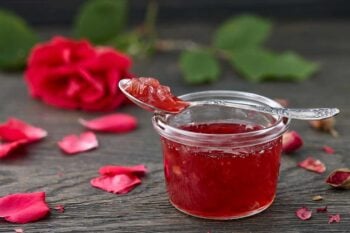The dandelion is so much more than a bothersome weed in your lawn. Dandelion is thought to be originally native to the Central Asian region, but has become naturalized in many parts of the world, including North America because it literally “grows like a weed” in almost any soil and climate.
Throughout history, it has been known as food, medicine and drink. Once known in France as Dent de Lion (lion’s tooth), the dandelion (Taraxacum officinale) is mostly now known as a weed. Yet, at one time, the dandelion was so prized as a food and medicinal plant that it was intentionally brought to America by European settlers.
How to Use Dandelion
For the forager, there is no part of the dandelion that needs to go to waste. In the early spring, before the flower buds have begun pushing up from the crown, dandelion greens make a special addition to meals, either raw in a salad or smoothie, or cooked in coconut oil, butter or bacon fat, like spinach. (The presence of the fat with cooked dandelions will make the nutrients in them even more bioavailable!)
Once the flowers begin to bloom and the leaves become bitter, you can pick them for eating, medicine, or wine-making (recipe below). Dandelion flowers can be added fresh to salads, sautéed, fried or steamed with other vegetables, or made into a delightful jam or syrup.

The long taproot of the dandelion is generally dug when the plant enters its second year of life. Generally, roots are harvested in summer for medicinal purposes or in autumn for roasting and grinding into a chicory-flavored coffee substitute.
Dandelion seeds can be harvested throughout the year and are have historically been taken as a supplement to heal the body of various ailments, as well as to grow next year’s crop.
Dandelion in Herbal Medicine
The dandelion is part of Asian, Middle Eastern, European and Native American traditional healing practices as well as contemporary herbal medicine. Historically, dandelion had a diverse range of therapeutic uses but today’s herbalists mainly use it as an appetite stimulant and digestive aid.
The modern French name for dandelion is pissenlit, which pretty much means “wet the bed.” That is because the leaves can be a mild diuretic, helping your body remove excess water.
Dandelion leaves can be concentrated in teas and tinctures, and used to treat conditions affecting the liver, kidneys and gallbladder. Dandelion also has anti-diabetic properties, and research suggests that it may be helpful in improving cardiovascular system function and promoting heart health.
Dandelion seeds can also be used to help reduce inflammation in the body, and they are being studied as a breast cancer supplement.
More Dandelion Recipes
But What About the Bees?
Many people worry that harvesting dandelions for food or medicine will deprive bees of an important early spring food source. However, the truth is, in temperate regions of the Northern hemisphere, dandelions are not a preferred food source for bees, as they lack vital amino acids that bees need.
In fact, bees greatly prefer willow, maple, cherry, hazel, Oregon grape, wild violets, henbit, purple dead nettle, ground ivy, and chickweed—all of which bloom before or at the same time as dandelions.
And like all annual flowers, picking a few dandelion blossoms only causes them to bloom even more prolifically within a day or two, so paradoxically, the best way to make more dandelions for the bees is to pick them!
Dandelion flowers, leaves, and roots have been an important food and medicine source for humans for centuries. As long as we are harvesting responsibly, we should not feel guilty for utilizing a plant that has been a part of human history for so long.

Dandelion Wine
Ingredients
- 1 package dried wine yeast
- 1/4 cup filtered water, warm
- 2 quarts dandelion petals
- 4 quarts filtered water
- 1 cup fresh orange juice
- 3 tablespoons fresh lemon juice
- 3 tablespoons fresh lime juice
- 8 whole cloves
- 1/2 tsp. powdered ginger
- 3 Tbsp. organic orange peel, coarsely chopped, pith removed
- 1 Tbsp. organic lemon peel, coarsely chopped , pith removed
- 6 cups raw cane sugar
Instructions
- Dissolve the yeast in the 1/4 cup of warm (not hot!) water. Set aside.
- Wash the dandelion blossoms well, then separate the flower petals from the base of the blooms (sepals) so there is no green left at all.
- Put the petals in a large pot with 4 quarts of water, and the orange, lemon and lime juices.
- Add the cloves, ginger, orange and lemon peel, and sugar.
- Bring to a boil and continue to gently boil for an hour, stirring occasionally.
- Transfer to a non-reactive container made of glass, enamel or ceramic.
- Cool to room temperature.
- Stir in the activated yeast.
- Let stand, covered in the dark, for three days, stirring often.
- Strain thoroughly into a 1-gallon airlock fermenting jar made of glass or ceramic.
- Set the fermenting jar in a darkened place for three or four weeks, or until wine clears.
- Decant into bottles and cork, or simply remove the airlock and seal the gallon jar.
- Allow the wine to age in a cool, dark place for at least 3 months; the longer, the better.
Nutrition
Recommended for This Recipe
Updated April 24, 2023.












